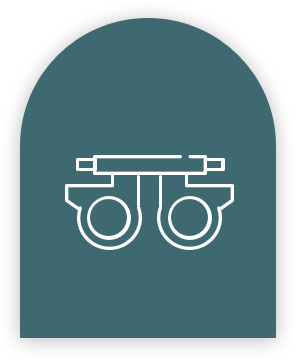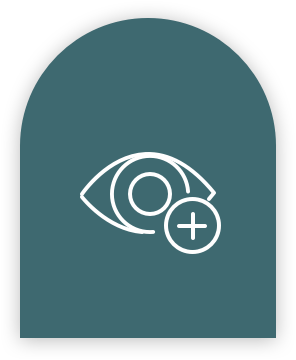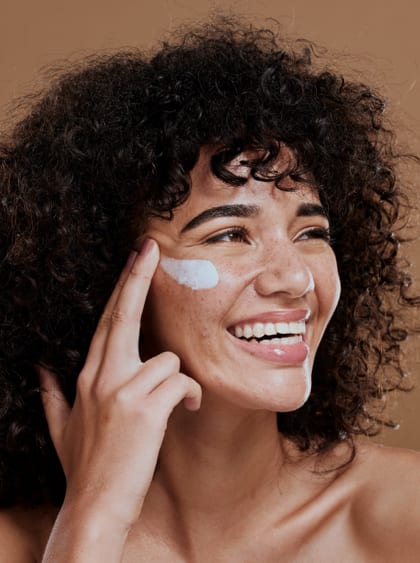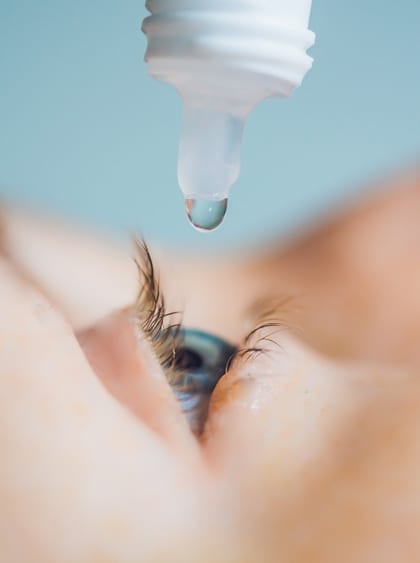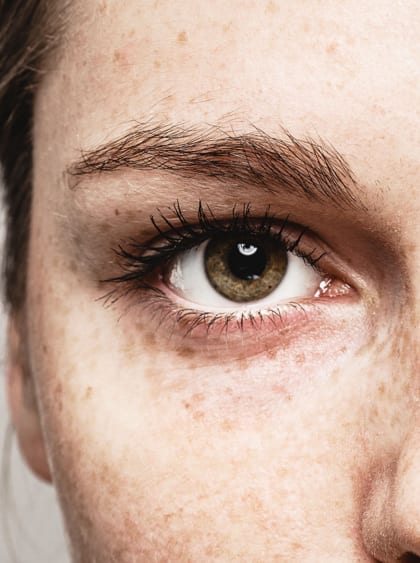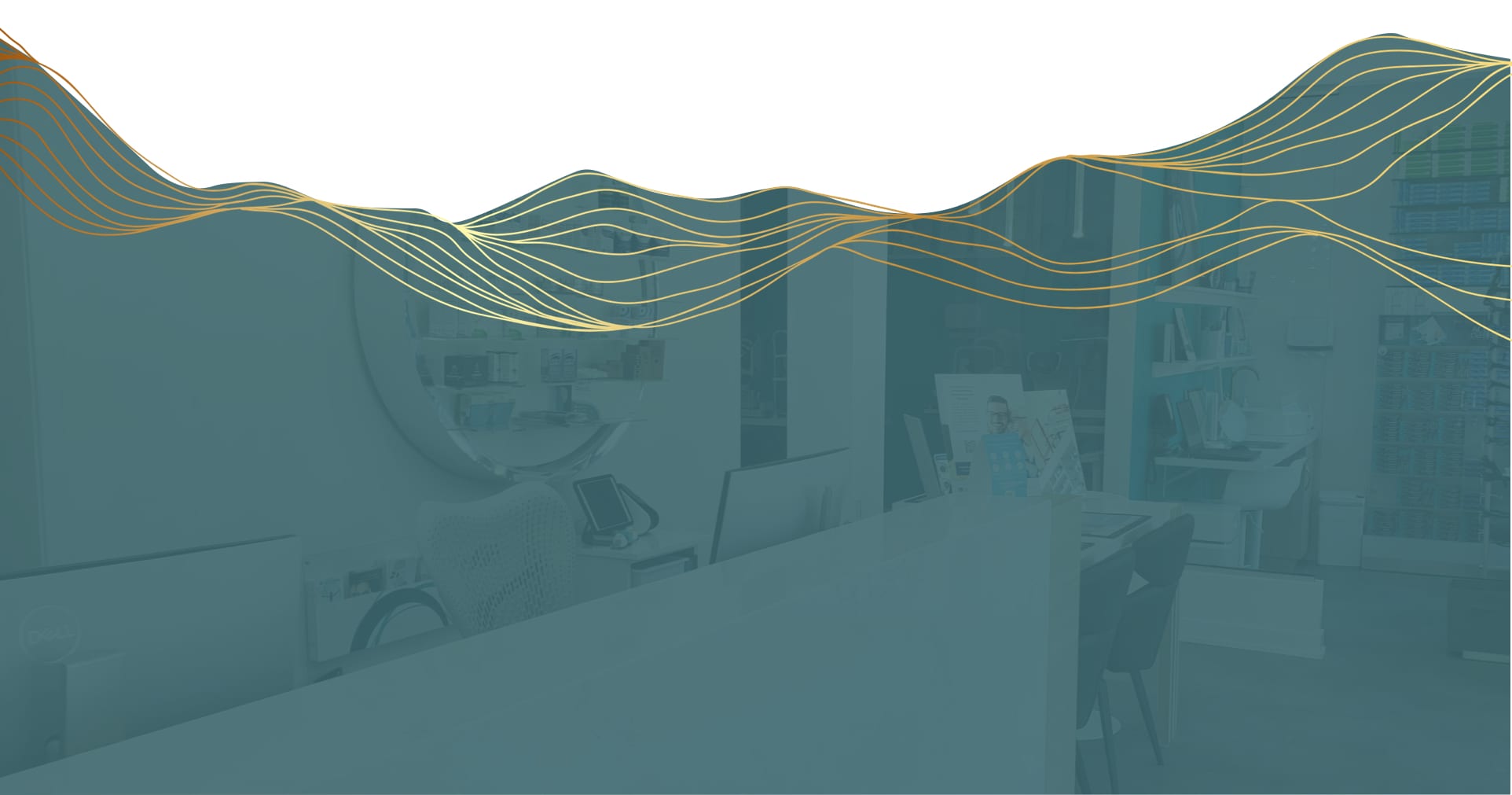Myopia is a common form of refractive error in the eye, and it’s often referred to as nearsightedness. It causes things to become blurrier the further they get from your eye. It’s permanent, and it’s caused by a problem with the shape of your eye causing light to enter incorrectly. There’s good news though: myopia is highly treatable with contact lenses. But how do they work?
Contact lenses for myopia are designed to correct your vision by changing how light enters the eye. They counteract the changed shape of your eye to properly refract the light again, reducing the effect on your vision. This helps give you clear eyesight while wearing the lenses!
What Is Myopia?
Your eyes are extremely complicated organs. When they are shaped properly, light enters through the clear front. These light rays refract, or bend, to a singular focal point located on your retina. This information is then sent to the brain, which builds the image that we see. When everything works in unison, this system lets you focus clearly.
But when there’s a problem with the shape of the eye, the light doesn’t focus on the correct point. Instead of reaching the focal point on the retina, the light rays are converging somewhere else. When this occurs, it’s called a “refractive error,” since there’s an error with how your eyes refract light.
When the eye grows too long front-to-back, it causes the light rays to focus in front of the retina. Instead of receiving clear, sharp light, the retina receives scattered information and creates a blurry image. The further away from your eye an object gets, the blurrier it seems. This condition is called myopia, but is more commonly called nearsightedness.
How Is Myopia Treated?
When it comes to myopia—or any other kind of refractive error— the four main treatments aim to correct how light enters the eye. Typically, this is done through:
Prescription glasses that adjust how the light enters the eye- Refractive surgeries (like LASIK) which reshape the front of the eye
- Orthokeratology, where specialty contacts are worn overnight to temporarily reshape the eye
And one of the most common methods for treating myopia? Contact lenses.
How Do Contact Lenses Work?
Contact lenses are thin pieces of transparent material that sit directly on your eye. They cover the misshapen front of your eye to change how the light enters. Once light hits them, the lenses adjust the angle to refract properly and give you clear vision.
This helps to counteract your normal vision problems. Contacts are often much more convenient than eyeglasses since they don’t have any visible barriers like frames or arms. Soft contact lenses are much harder to dislodge, making them a popular choice for athletes or people who work in active environments where eyeglasses can get damaged or lost.
But it’s important to note—every person’s eyes are different. So before you buy contacts, you need to schedule a contact lens exam and fitting with an optometrist to get your exact prescription. Otherwise, you won’t get a pair that works and fits you.
There are several different types of contact lenses:
Rigid gas-permeable, which are made of a firm material and are long-lasting- Soft lenses, which are more comfortable but last for a shorter period of time
- Hybrid lenses, which combine both materials to provide a comfortable, long-lasting solution
- Scleral lenses, a larger size which rest on the whites of your eyes and arch over the cornea
And it’s crucial to properly care for your contact lenses to maintain their effectiveness!
How to Care for Your Contacts
Since contacts directly touch your eyes, they can easily transmit bacteria, viruses, and harmful contaminants. That’s why proper cleaning and care are essential.
It can help to:
Always wash your hands before handling your contacts- Clean and disinfect them after each use by the manufacturer’s specifications
- Never sleep in your contacts unless otherwise specified
And don’t forget: you should never use cleaning solutions or cases that are out-of-date.
Do Contacts Expire?
Contact lens cases and solutions are designed to have an airtight seal. This helps keep contaminants out and keeps the material sterile and safe for storage. Remember: contact lenses come into direct contact with the surface of your eye, so if they become contaminated, they can spread harmful irritants to your body.
But over time, this seal is subject to wear and tear. Eventually, it won’t be airtight anymore, possibly turning the packaged lens into a breeding pool for harmful bacteria.
Fortunately, you can tell when the seal isn’t guaranteed to be airtight anymore by checking the expiration date. Never use out-of-date materials for storing and cleaning your contacts, as they can potentially harm your eyes. If your case or solution is expired, it’s time to visit your optometrist to get a new one.
Where to Get a Contact Lens Prescription
If you’re living with myopia in Burlington and want to try contact lenses, or if you need a fresh set, come visit us at MEye Health. Our team of experienced optometrists is here to provide you with an accurate prescription for clear vision. Don’t hesitate—schedule an appointment with us today!




